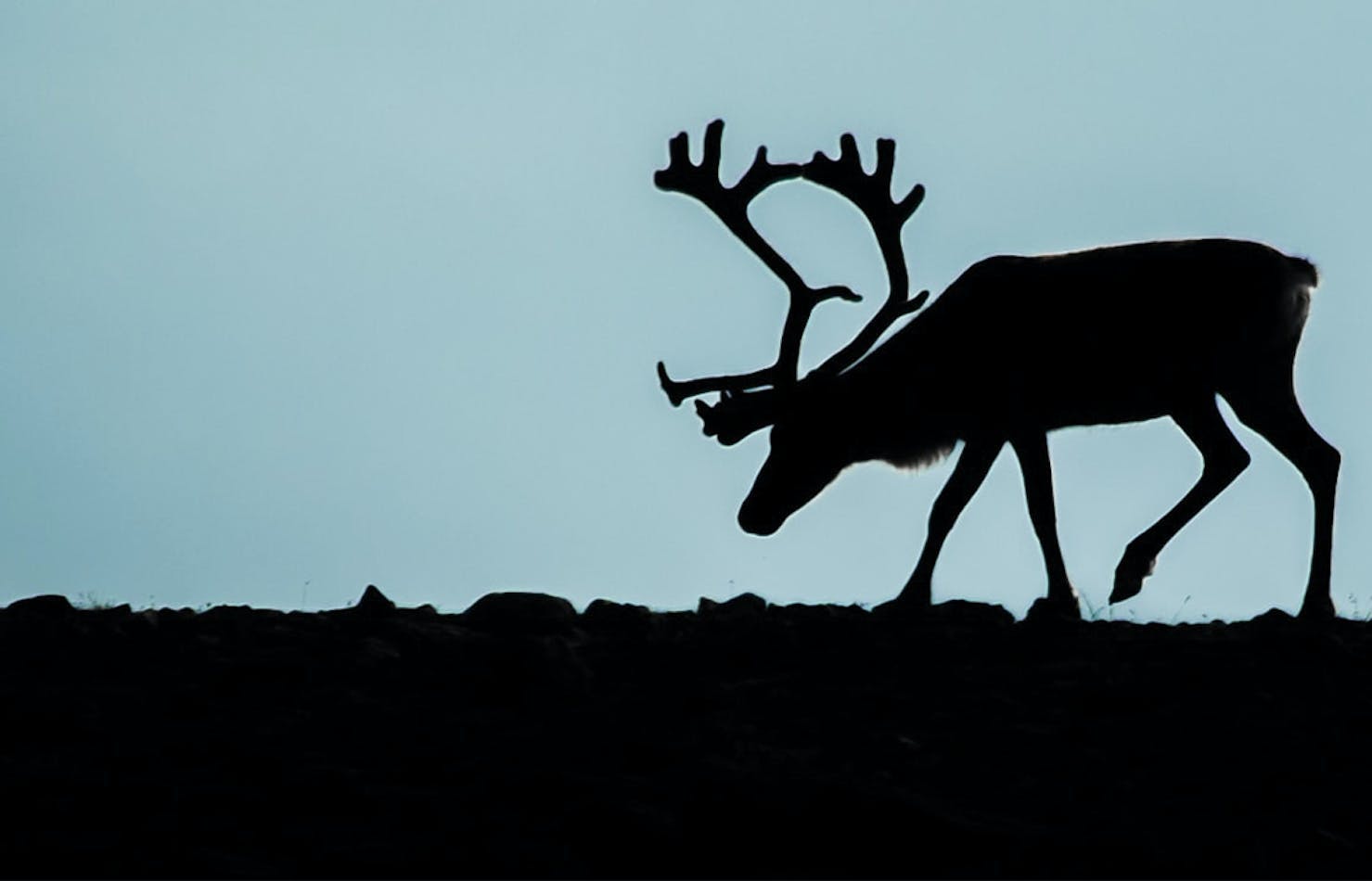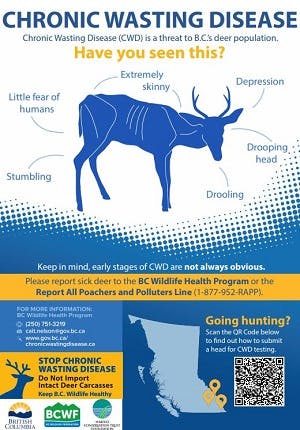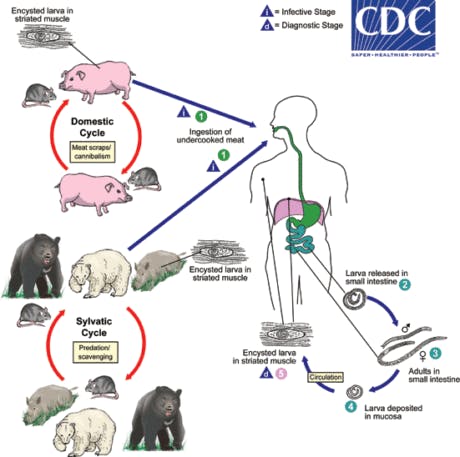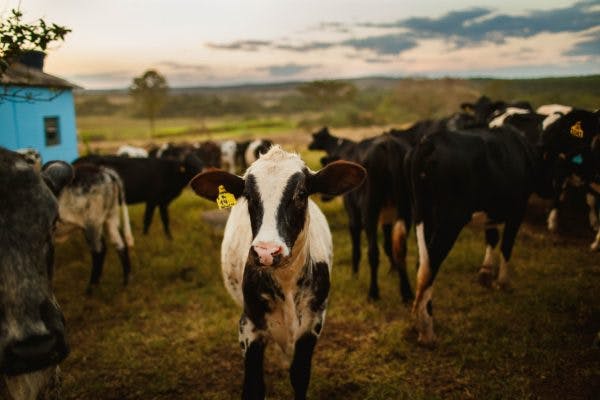
Animal Diseases to be Aware of When Hunting
In preparation for my first hunt, I’ve been doing a lot of reading and learning about what I need, or what I don’t need, and things to be aware of. Along my journey, one of the things that came to mind was animal diseases. I feel as though this could be something that many new hunters may not necessarily think about, but could also be considered as one of the most important parts of hunting!
Hunter safety is so important and in taking an opportunity to share knowledge with others on possible diseases, I chose to put together this blog post. I’m going to talk about the common diseases which you could run into, the risk you might be facing and what to do in the event that you come into contact with an animal that carries the disease.
Below are some common diseases, but please keep in mind that this isn’t meant to be an exhaustive list by any means and I would whole heartedly recommend that you do additional research for any animal you plan to hunt to make sure you have as much knowledge as possible and are as safe as possible during your hunt.
Additionally, if you aren’t certified to go hunting yet, check out our blog on how to hunt in BC which outlines how you get your hunting certification.
The common diseases we will review today are as follows:
- Chronic Wasting Disease
- Trichinosis
- Hydatid Disease
- Bovine Tuberculosis
- Epizootic Hemorrhagic Disease
Chronic Wasting Disease
Chronic Wasting Disease or CWD, can be found in Cervids (these are the split hoofed animal with antlers which are members of the deer family) such as Mule Deer, White Tailed Deer, Elk, Moose and Caribou. This is a fatal disease that affects the brain and nervous system of the anima. While there’s no direct evidence (or cases of the disease in humans) this disease is transmittable between animals and humans, it is highly recommended that hunters take precautions to reduce any possibility of transmission.

Now that we know what this disease is and the general risk, let’s discuss where you’re likely to find it, what signs to look for and what followup actions you can or should look to take. Let’s give a little background first, did you know that the first detection of this disease was 53 years ago in Colorado? Since then CWD has been found in British Columbia, Alberta, Saskatchewan, Ontario, and in Montana (close to the BC border).
How can you tell if an animal is infected? It may not always be obvious, especially if the animal is in the beginning stages of CWD, but some of the signs of infection include:
- Little fear of humans
- Poor coordination causing stumbling or trembling
- Drooping head
- Drooling
- The animal may appear skinny due to weight loss
- Unusual behaviour
If you come across an animal that shows signs of being sick with Chronic Wasting Disease, report it immediately. In BC reporting for any dead or sick animals can be done by contacting the BC Wildlife Health Program (250-751-3219), or RAPP (1-877-952-RAPP). Reporting for other provinces can found below in our Quick Links section.
Trichinosis
Trichinosis is a parasitic disease that’s caused by roundworms. It’s commonly found Bear, Cougars, Wolves, Domestic Pigs, or Wild Boar. In severe cases, this disease can be fatal to humans and transmission happens when infected meat is eaten either raw or undercooked. The best way to prevent transmission of this disease is to not eat the meat. However, sometimes that may not be practical if you’ve already killed the animal and don’t want to waste the meat. So if you plan to eat the meat, ensure that it is fully cooked at safe temperatures. According to the CDC, curing, drying, smoking, or microwaving meat alone does not consistently kill worms, so keep this in mind.

Looking for signs that an animal is sick with Trichinosis isn’t always possible as they just may not appear sick. Some may show changes in their behaviour, such as being less active that normal, but that’s could be hard to tell based on a single interaction with an animal infected.
There are however signs and symptoms of a trichinosis infection in humans. These can vary, both in the severity as well as the duration. First signs include:
- Nausea
- Diarrhea
- Vomiting
- Fatigue
- Fever
- Abdominal discomfort
Following the first signs and symptoms, these other can follow:
- Headaches
- Fevers
- Chills
- Cough
- Swelling of the face and eyes
- Aching joints and muscle pains
- Itchy skin
- Diarrhea
- Constipation
If you think you may have this disease, go to your health care provider immediately for testing.
Hydatid Disease
This disease is also known as Echinococosis and is a parasitic disease caused by tapeworms. This commonly infects Dogs, Foxes and Wolves, and although it can also infect humans, it depends on the type (there are two main types; cystic echinococcosis and alveolar echinococcosis). These tapeworms release eggs into the feces of dogs and wild canines and their eggs stick to the animals fur. Humans can get infected from the ingestion of the eggs.
According to the CDC, those infected with cystic Echinococosis often remain asymptomatic until hydatid cysts containing the larval parasites grow large enough to cause discomfort, pain, nausea, and vomiting. The cysts grow over the course of several years before reaching maturity and the rate at which symptoms appear typically depends on the location of the cyst. The cysts are mainly found in the liver and lungs but can also appear in the spleen, kidneys, heart, bone, and central nervous system, including the brain and eyes. Cyst rupture is most frequently caused by trauma and may cause mild to severe anaphylactic reactions, even death, as a result of the release of cystic fluid.
Infection is asymptomatic in livestock and dogs as well. The best way to protect yourself is by wearing disposable gloves, washing your hands, and disinfecting your work space when handling live canines, their feces, pelts or carcasses.
Bovine Tuberculosis
This is a contagious bacterial disease is which is slow growing, long lasting and is an aerobic bacteria that has been reported to have infected Bison, Moose, Deer, Elk and Cattle as well as humans. Because the disease is slow acting, signs can vary, or may not show at all. Advanced stages may show multiple small gritty lumps in the lymph nodes, lungs and on the inner surface of the rib cage.

This disease is transmittable between animals and humans and when it comes to cattle, infection is typically caused by eating or drinking contaminated, unpasteurized dairy products. Infection can also happen if you come into direct contact with a wound, or by inhaling the bacteria in air exhaled by animals that are infected, though direct transmission from animals to humans through the air is thought to be rare.
The bacteria from this disease can infect an animal but lie dormant for many years and thus, show no signs of being sick. Because of eradication programs like those in Canada, the advanced form of this disease is rare because most cases are detected in the early stages when infection typically consists of few or small lesions in the lungs or lymph nodes associated with the respiratory system.
When progressive disease does occur, the general signs are as follows:
- Weakness
- Loss of appetite
- Weight-loss
- Fluctuating fever
- When the lungs are extensively diseased, there can be an intermittent, hacking cough.
If you believe you have come into contact with an infected animal, report the sick animal, and if possible include photos and videos. Always wear gloves and wash your hands, clothes, and knives thoroughly in warm soapy water after field dressing and butchering. Hunters that suspect their kill is infected should contact their provincial or federal agencies and seek medical advice if they suspect they may have been exposed.
Epizootic Hemorrhagic Disease
This disease affects White-Tailed Deer in specific and is caused by an infection if a virus which can be fatal. According to the CDC, while this has been found throughout the USA, it has also been detected in the southern portions of British Columbia, Alberta and Saskatchewan (albeit rarely and sporadically).
This disease is similar to CWD in that the deer will show the following signs and symptoms:
- Lost fear towards humans
- Lost appetite
- Become weak
- Salivate in excess.
- Blue tongue is possible from lack of oxygen in the blood
- Head and neck of the infected deer may swell
EHD has not been shown to affect humans to that it can be transmitted through bite, nor consumption of meat from an infected animal. Despite this, it’s not recommended to consume any meat from any infected animal due to the increased likelihood of other infections being contracted after EHD.
Quick Links:
Reporting Dead or Sick Animals in Canada:
Canadian Wildlife Health Cooperative
Alberta: Ministry of Environment and Parks
Saskatchewan: Ministry of Environment
Manitoba: Sustainable Development
Ontario: Ministry of Environment
Quebec: Ministry of Agriculture, Fisheries and Food
New Brunswick: Natural Resources & Energy Development
Newfoundland & Labrador: Department of Natural Resources
Nova Scotia: Communicable Disease Prevention & Control
Prince Edward Island: Environment, Water & Climate Change
Nunavut: Communicable Disease
Northwest Territories: Environment & Natural Resources
Yukon: Communicable Disease
>
Additional Resources to Learn More About Wildlife Diseases:
Canadian Wildlife Health Cooperative: Disease Surveillance
Alberta: Wildlife Diseases
British Columbia: Wildlife Diseases
British Columbia Centre for Disease Control- Field guide for Hunters, Trappers, Anglers & Biologists – Diseases you can get from wildlife
Common Diseases and Parasites in Northern British Columbia
Manitoba: Wildlife Diseases
Saskatchewan: Fish & Wildlife Diseases
Northwest Territories: A Field Guide to Common Wildlife Diseases and Parasites
>
Safe hunting!
Corrine Owerko


